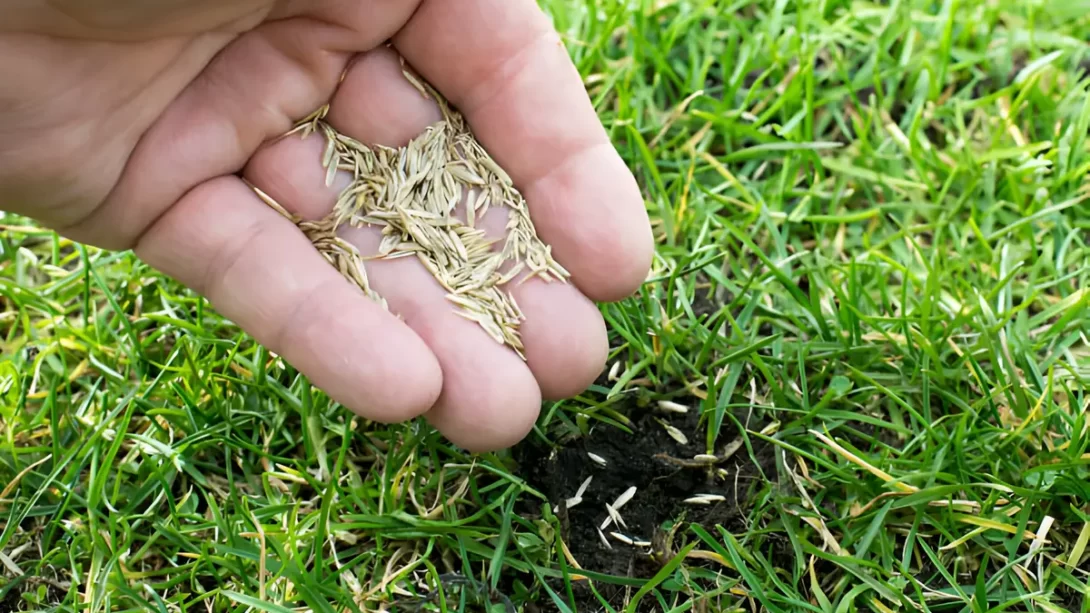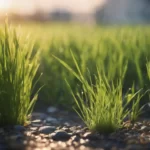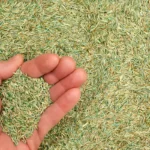Grass seed plays a crucial role in creating lush, green landscapes and maintaining healthy lawns. The journey from a grass blade to a packet of seeds is a fascinating and complex process, involving several stages of growth and careful cultivation. Understanding how grass seed is harvested not only deepens our appreciation for this essential component of lawn care but also informs better gardening practices. This article will explore the detailed process of grass seed harvesting, from the grass life cycle to the final seed product.
Types of Grass and Seed Varieties
Grasses are broadly categorized into two groups: cool-season and warm-season grasses. Cool-season grasses, such as Kentucky bluegrass and fescue, thrive in cooler climates and have specific growth patterns that influence their seeding processes. Warm-season grasses, like Bermuda and Zoysia, are suited to warmer areas and have different seeding and harvesting requirements.
Each grass variety produces seeds with unique characteristics. The size, shape, and growth requirements of these seeds vary, affecting how they are harvested and processed. For instance, the delicate seeds of fine fescues require a different harvesting approach compared to the hardier seeds of Bermuda grass. These variations necessitate specialized knowledge and techniques for effective harvesting.
Grass Seed Development and Maturation
The process of grass seed production begins with the plant’s growth cycle. Grass plants flower and develop seed heads, which mature over time. This maturation process is critical, as premature harvesting can lead to low-quality seeds that may not germinate effectively.
The readiness for harvest is typically indicated by the color and condition of the seed heads. Mature seeds will usually have a dry and brittle appearance, often changing color from green to a golden brown or straw color. The timing of this maturation varies with the type of grass and environmental conditions, with most grass seed harvesting occurring in late summer or early fall.
Seasonal factors play a significant role in grass seed production. The right balance of sunlight, temperature, and moisture is essential for the development of viable seeds. In different geographical regions, these conditions vary, influencing the specific timing and methods used for harvesting grass seeds.
Pre-Harvest Preparation
Successful grass seed harvesting begins long before the actual collection of seeds. Field preparation is a critical step, ensuring that the grass plants are healthy and the seeds are of high quality. This involves regular maintenance such as proper mowing, irrigation, and fertilization, tailored to the specific needs of the grass variety.
Monitoring for pests and diseases is also essential. These can significantly impact seed quality and yield. Farmers use various strategies, including integrated pest management and selective use of fungicides, to protect the seed crop. Close attention is paid to signs of infestation or disease so that timely interventions can be made.
Optimal seed maturation is encouraged through careful management of irrigation and fertilization. Over or under-watering can affect seed development, as can the balance of nutrients in the soil. The goal is to create the ideal conditions for the grass to produce healthy, mature seeds.
Harvesting Techniques
When it comes to harvesting grass seeds, there are primarily two methods: manual and mechanized. Manual harvesting, often used in smaller or more delicate varieties, involves hand-collecting the seed heads. While labor-intensive, this method allows for careful selection of the best seeds.
In larger-scale operations, mechanized harvesting is the norm. Combines, specifically designed for grass seed collection, are used. These machines cut the seed heads from the plants and separate the seeds from the chaff. The process must be carefully managed to minimize seed loss and damage. The timing of mechanized harvesting is crucial; the seeds must be dry enough to be separated easily but not so dry that they shatter and are lost during the process.
The machinery used in grass seed harvesting is often specialized, designed to accommodate the specific requirements of different grass seed varieties. For instance, some machines are better suited for collecting larger seeds, while others are more effective for smaller, finer seeds.
Post-Harvest Processing
Once harvested, the grass seeds undergo several processing steps. The first is cleaning, which involves removing dirt, debris, and non-seed materials. This is typically done using a combination of sieves and air blowers. The seeds are then dried to a specific moisture level, essential for preserving their viability and preventing mold growth.
Testing for seed quality is a critical part of post-harvest processing. Germination tests are conducted to ensure that the seeds are capable of sprouting, and purity analysis helps determine the percentage of actual grass seeds in the batch. These tests are vital for maintaining quality standards and ensuring the success of the seeds in producing healthy lawns and landscapes.
Storage and Distribution
After harvesting and processing, the next crucial step is the proper storage of grass seeds. The longevity and viability of seeds are highly dependent on storage conditions. Seeds are generally stored in cool, dry places to prevent any deterioration in quality. Humidity and temperature control are key; excessive moisture can lead to fungal growth, while high temperatures can reduce the seeds’ germination rate.
Packaging plays a significant role in seed preservation. Grass seeds are often packaged in moisture-resistant materials to extend their shelf life and maintain quality during transportation and storage. The packaging also provides an opportunity to include important information such as the seed type, planting instructions, and best-before dates.
The distribution of grass seeds involves a network that spans from local garden centers to global supply chains, catering to both individual gardeners and professional landscapers. The seeds are transported under controlled conditions to maintain their viability until they reach the end consumer.
Challenges in Grass Seed Harvesting
Grass seed harvesting is subject to various challenges, the most significant being weather conditions. Unpredictable weather, particularly untimely rains, can severely impact the harvesting process. Wet conditions during harvest can cause seeds to clump and become difficult to process, while drought can reduce seed yield and quality.
Mechanical failures are another challenge, especially in large-scale operations where reliance on harvesting machinery is high. Regular maintenance and timely repairs of equipment are essential to avoid disruptions during the crucial harvesting period.
Environmental factors like soil health, pest infestations, and disease outbreaks can also affect seed quality and yield. Farmers must constantly adapt their strategies to manage these factors effectively, ensuring a successful harvest.
Conclusion
The harvesting of grass seeds is a complex and meticulous process, crucial for maintaining beautiful and healthy lawns and landscapes. From the initial growth stages of the grass to the final storage and distribution of the seeds, each step requires careful planning and execution. The challenges faced during this process, including environmental factors and the need for precise timing, highlight the skill and dedication involved in producing high-quality grass seeds.



